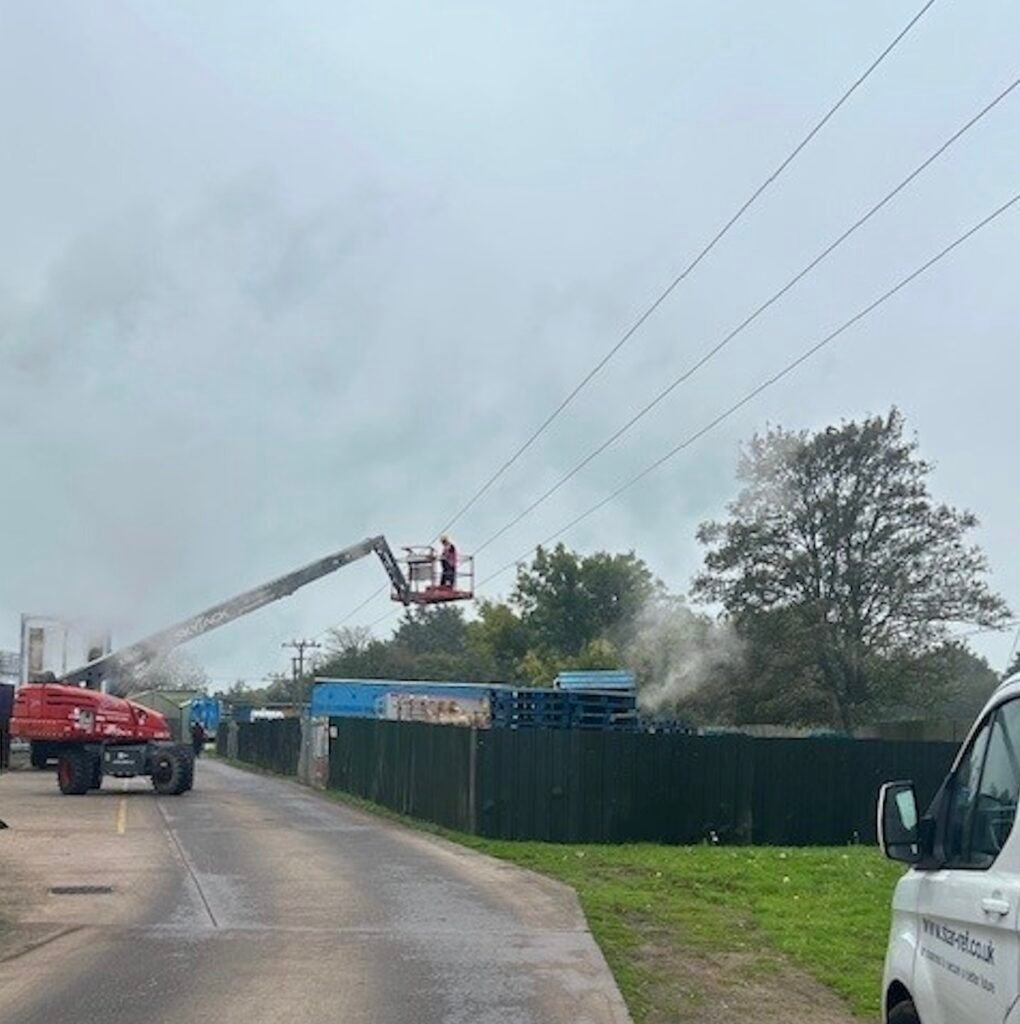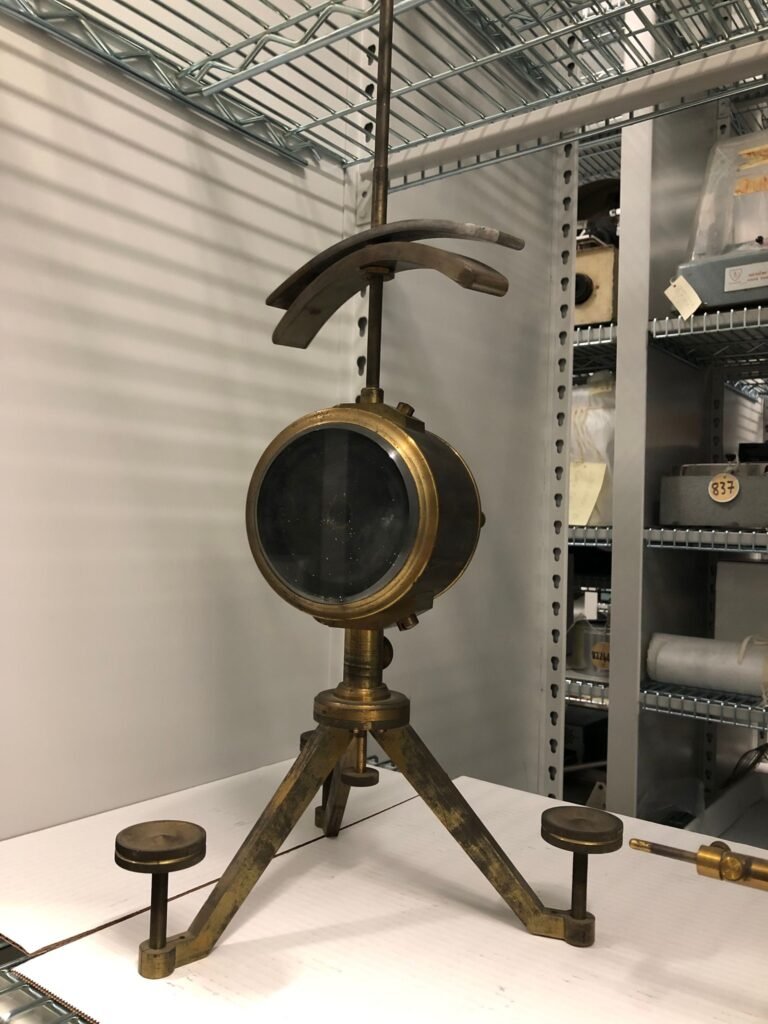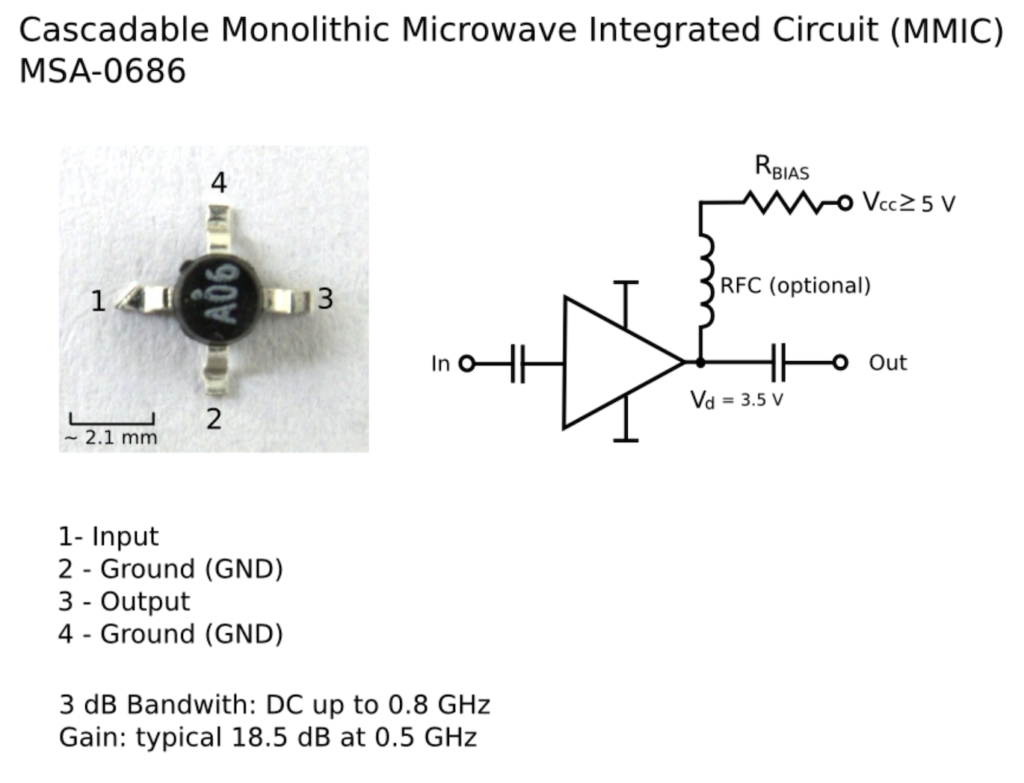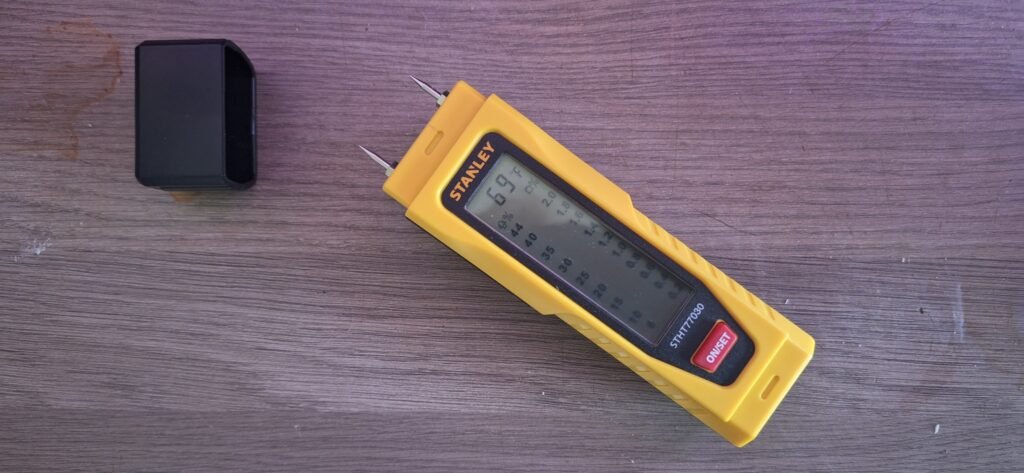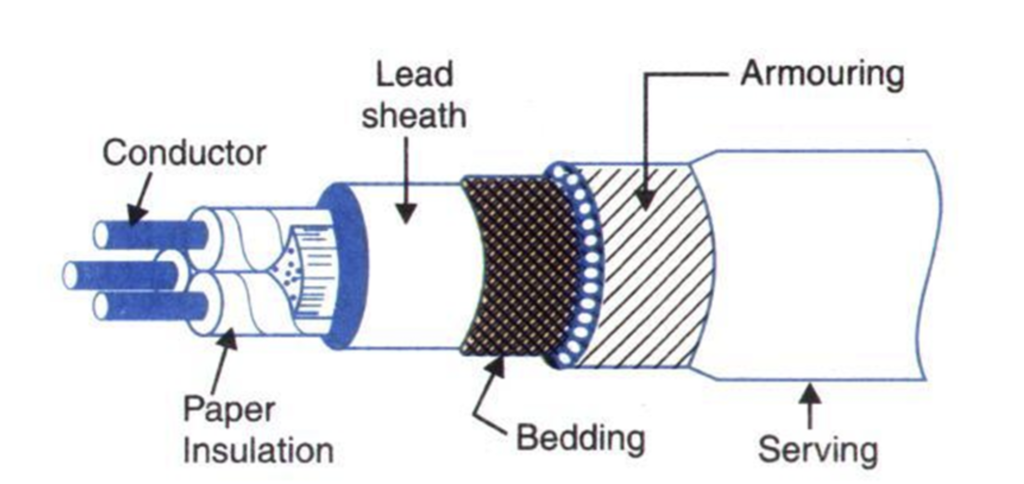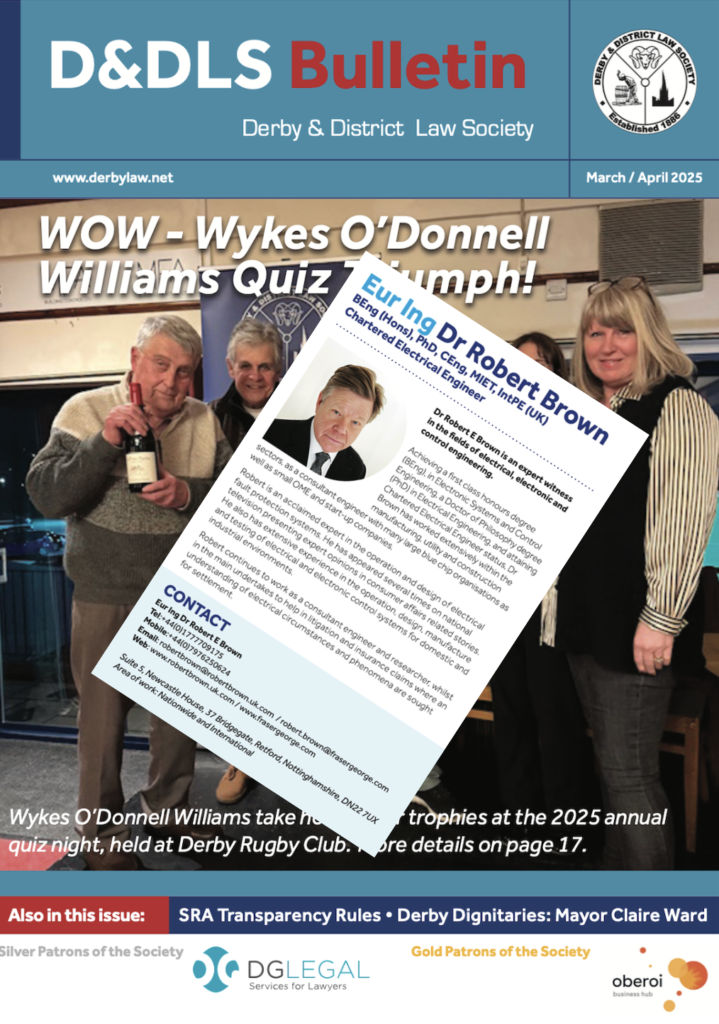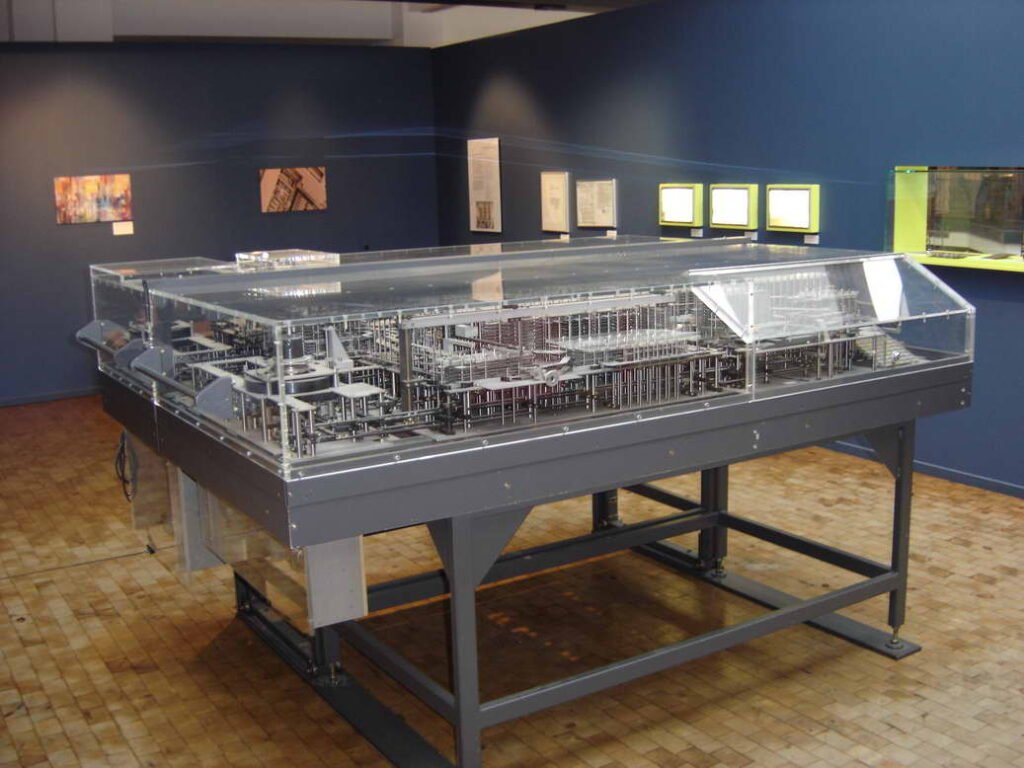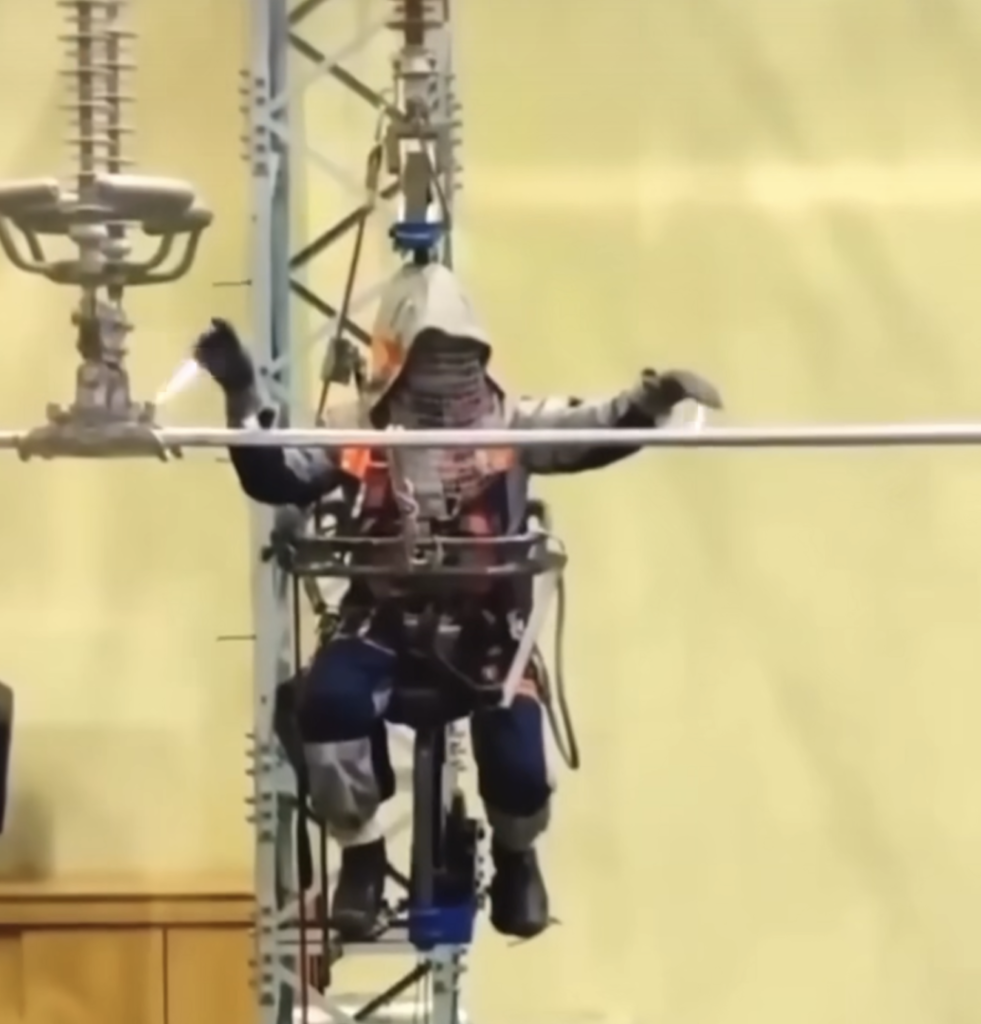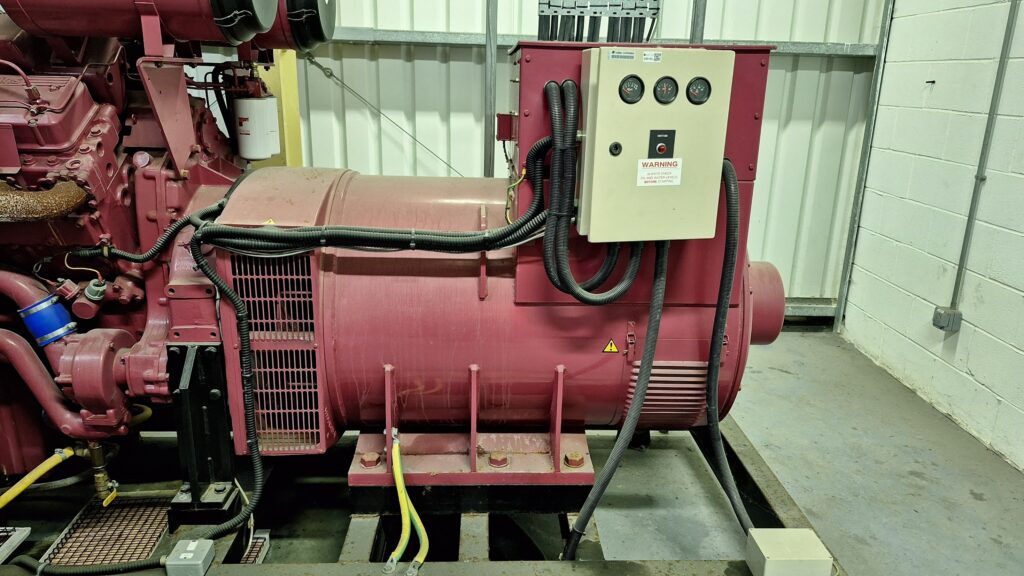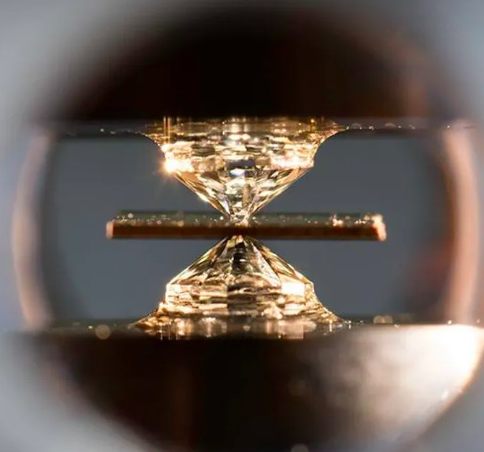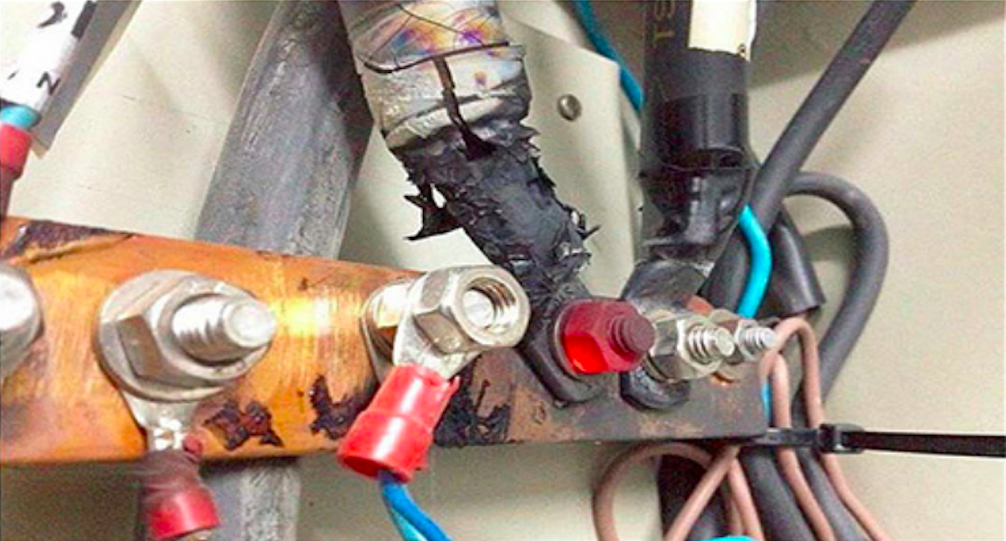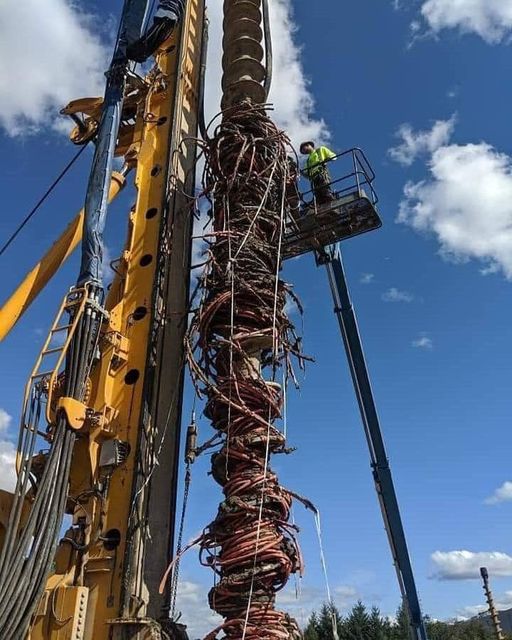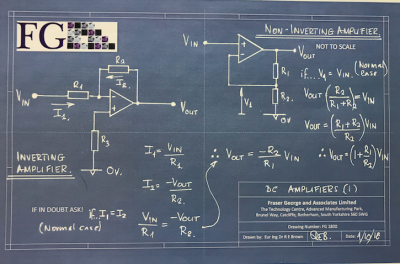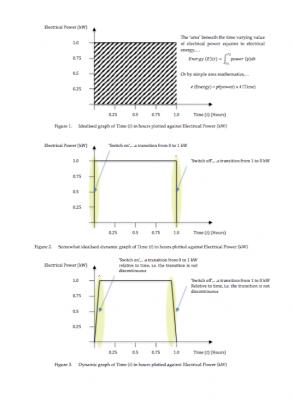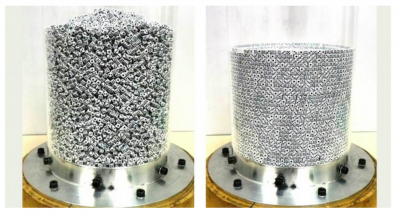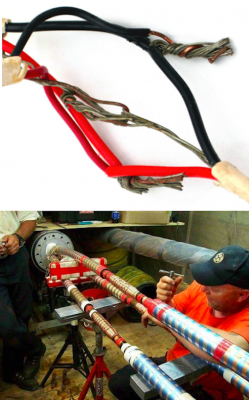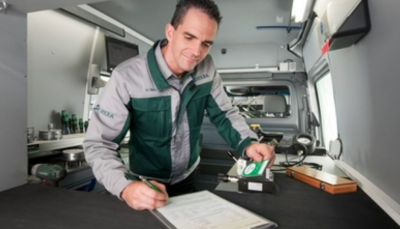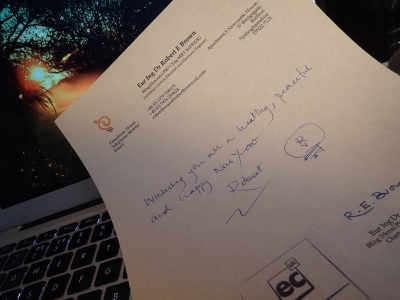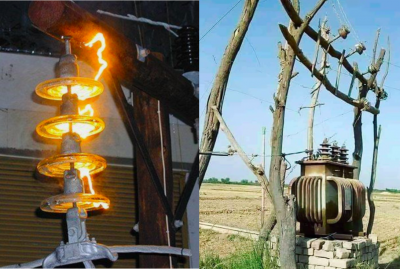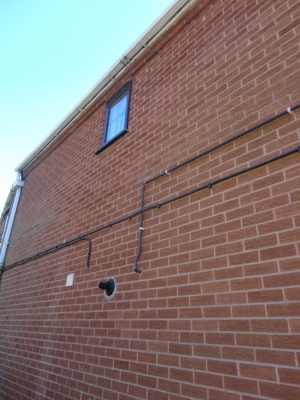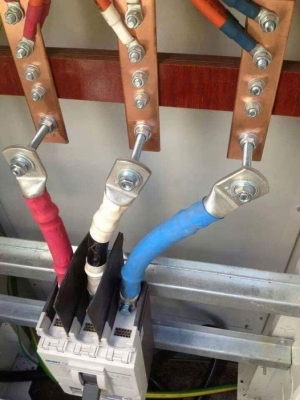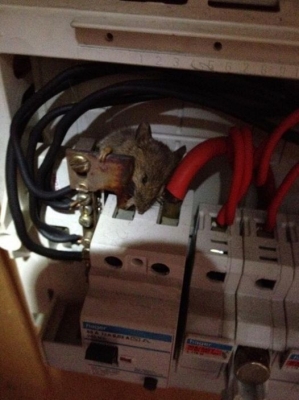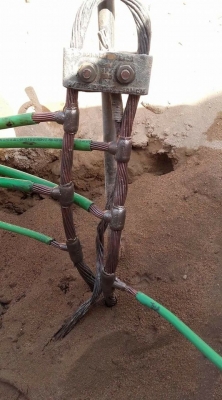Electrical Engineer Expert Witness? Electrical dispute? Do you require the services of an experienced electrical engineer expert witness? CPR 35 expert report? Contact Fraser George !!
Audio speaker cable
For optimum sound performance of an audio system, is it necessary to use expensive ‘stranded’ copper wire or could standard domestic ‘solid’ copper cable be used?
Audio speaker cable/wire is a passive electrical component and fundamentally constitutes an electrical conductor with the function to convey electrical signals from a signal source, most often an audio amplifier to an audio speaker.
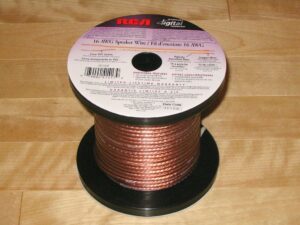
The term ‘audio’ refers to the range of the ‘pitch’ or ‘frequency’ of sound energy commonly detected by the human ear. The measurement unit of pitch/frequency is measured in hertz (Hz).
Sound energy is a form of energy that can be heard by living things. Sound physically consists as oscillatory compression/expansion of a fluid medium, i.e. a liquid, gas, or other material that continuously deforms (flows) under an applied shear stress, or external force.
The ‘average’ human audio spectrum is nominally 16 Hz to 20 kHz.
The electrical signals conveyed by an audio speaker cable/wire are an electrical energy ‘representation’ of sound energy, such that in operation the audio speaker converts the electrical representation of sound to oscillatory compression/expansion of the surrounding air, i.e. a series of sound waves.
Given the latter, it follows that the electrical signals conveyed by an audio speaker cable/wire vary in the frequency range of 16 Hz to 20 kHz, moreover the signals will also vary in strength (magnitude). Fundamentally, this circumstance establishes that the speaker cable is conveying varying amounts of electrical energy, i.e. the quotient of power and time.
In the electrical domain, the variance and conveyance of electrical energy is influenced by the attributes of the electrical environment, i.e. the electrical resistance, inductance and capacitance inherent in the audio wire/cable. Collectively the three parameters are drawn together and referred to as electrical ‘impedance’.
The ideal audio wire/cable has no resistance, capacitance, or inductance i.e. no impedance, such that the format of electrical signal at the terminals of the audio speaker is exactly the same as that at the terminals of the audio amplifier.
Electrical impedance acts to reduce and distort the variance of electrical energy when conveyed by the audio wire/cable, hence the optimum design of audio wire/cable seeks to reduce impedance towards zero.
In physical terms electrical resistance of a conductor is inversely proportional to its cross section area of the conductor, hence the thicker the wire/cable the lower the electrical resistance. In dynamic ‘time’ related terms, electrical resistance is an ‘inert’ electrical parameter and is referred to as a passive component.
In contradistinction, the inductance and capacitance of a conductor are ‘responsive’ to the variance of the frequency of the conveyed electrical signal and as such are referred to as reactive components.
Hence dynamically for inductance, the higher the frequency and quantum of inductance of a wire/cable, the higher the inductive reactance.
Conversely for capacitance, capacitive reactance is inversely proportional to frequency and quantum of capacitance inherent within the wire/cable. Hence dynamically for capacitance, the higher the frequency and quantum of capacitance of a wire cable the lower the capacitive reactance.
The latter establishes that the relationship of inductive reactance to frequency is exactly opposite to that of capacitive reactance. Further, in a directional, polarity sense the two reactive components oppose each other such that a particular frequency (resonance) the components being equal in magnitude yet polar opposites, cancel each other.
It follows that given the fixed resistance, inductance and capacitance of a wire/cable, the impedance presented to the conveyed the audio spectrum electrical signal by the wire/cable will vary. In other words the wire/cable will possess a dynamic, ‘frequency response’ characteristic.
I also follows that the optimum frequency response of the wire/cable should be ‘flat’ as would be the case in a purely resistive (passive) circumstance and that the quantum of resistance is low.
Yet when introducing inductance and capacitance to the circumstance, a balance has to be achieved where inductance and capacitance of the wire/cable per unit length are chosen to minimise overall impedance yet providing a flat frequency response across the audio spectrum.
Literature suggests that some premium audio speaker wire/cable have lower inductance at the cost of higher capacitance, typical values being 0.02-0.05μH/foot, yet of audio wire/cable distributors clear frequency response data is hard to find. The frequency response for such a cable characteristic is shown in Figure 1.
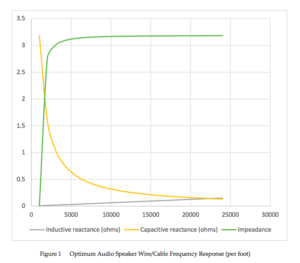
In general audio speaker wire/cable is selected based on price, quality of construction, aesthetic purpose, and convenience, rather than electrical characteristics and frequency response.
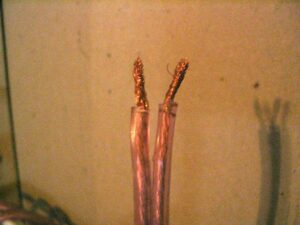
For example, stranded copper wire is more flexible than solid wire, and is suitable for movable equipment. For a wire that will be exposed rather than run within walls, under floor coverings, or behind mouldings (such as in a home), appearance may be a benefit, but it is irrelevant to electrical characteristics. Improved outer insulation may be thicker or tougher, less chemically reactive with the conductor, less likely to tangle and easier to pull through a group of other wires, or may incorporate a number of shielding techniques for non-domestic use.
So to answer the initial question,.. “For optimum sound performance of an audio system, is it necessary to use expensive ‘stranded’ copper wire or could standard domestic ‘solid’ copper cable be used”, I consider for a static speaker the use of standard domestic ‘solid’ copper cable would be most suitable, and the thicker the better.
With respect to promotional claims of Audio speaker cable there are some quite outlandish statements with no supporting evidence,.. i.e. …
“Multi-strand construction for powerful bass
For a high quality, audiophile cable, Joe Bloggs cable makes a superb choice. With its thick multi-strand construction it offers a powerful bass response and works well over longer than average distances. Yet what makes the Joe Bloggs cable a true premium cable is the silver-plated copper. By silver-plating the cable the sonic characteristics are enhanced for a smoother, sweeter sound”.
In summary,
The shorter and thicker a wire/cable is, the lower is its resistance, as the electrical resistance of a wire is proportional to its length and inversely proportional to its cross-sectional area. The cable/wire’s resistance has the greatest effect on its performance.
The capacitance and inductance of the wire/cable have less effect because they are insignificant relative to the capacitance and inductance of the loudspeaker. As long as speaker wire resistance is kept to less than 5 percent of the speaker’s impedance, the conductor will be adequate for home use.
About Dr Robert Brown:
Eur Ing Dr Robert Brown (Robert) is the Executive Director of Fraser George and Associates Limited and is a Consultant and Forensic Engineer in the fields Electrical Electronic and Control Engineering.
Robert is an accomplished professional Electrical Expert Witness having prepared and presented many court compliant reports and presented oral evidence within the High Court, Crown Courts and County Courts.
Robert is a registered Chartered Electrical Engineer, specialising in the fields are control engineering, parameter data capture and accurate data ‘representation’. Robert graduated from Sheffield Hallam University with a first class honours degree in Electronic Systems and Control Engineering and followed this by completing doctorate research in Electrical Engineering, again at Sheffield Hallam University where Robert undertook research studies in the field of Disintegration and Arcing in Electrical Fuses. Robert is now considered to be a leading world expert in the field of electrical circuit protection systems, the phenomena of electrical fuse operation and the attributes of clearing ‘fault’ electrical current circumstances. Robert has published my pure and applied research studies in peer-refereed journals and at conference.
In his spare time Robert is a Formula 1 motor racing enthusiast and enjoys outdoor activities especially hill walking and scrambling, golf and fishing. Robert is a brass band enthusiast, a tuba player and band manager of Hatfield and Askern Colliery Band. When time allows Robert also enjoys travelling and reading any books associated with travel and popular science.
Robert’s Curriculum Vitae:
https://drive.google.com/file/d/1GihZlqFQgqj2GUvJ6Qyq8C0qUk_ex9K1/view?usp=sharing
Robert’s litigation specialisms:
https://drive.google.com/file/d/1j82-viH_6kWaegdLl_GRRAFcEaHUm0wM/view?usp=sharing
Robert’s case portfolio:
https://drive.google.com/file/d/1xec5cowOe184V7ejCXKtHn8ELGKE0e3d/view?usp=sharing
Robert’s notable cases:
https://drive.google.com/file/d/11VUNbJOadHKOyEoOfY8xTZaAokElJAdH/view?usp=sharing
For further information please contact Robert via;
Email,…robert.brown@frasergeorge.com or robertbrown@robertbrown.uk.com
Tel Land: +44 (0)1777 709175
Tel Mobile: +44 (0) 7976250624
https://www.facebook.com/Fraser.George.Electrical.Expert
https://www.facebook.com/EurIngDrRobertBrown
https://www.linkedin.com/in/consultantrobertbrown
https://www.linkedin.com/company/21539092
Websites: www.frasergeorge.com and www.robertbrown.uk.com
https://frasergeorge.com/contact-us/
#ElectricalExpertWitness, #ElectricalEngineerExpertWitness, #ExpertWitnessElectricalEngineer, #ElectricalExpert, #ElectronicExpertWitness ,#ElectronicExpert, #ElectricalShock, #ElectricalRegulations, #ElectricalStandards, #ElectricalConsultant, #ConsultantElectricalEngineer, #ConsultantEngineer, #ForensicEngineerElectrical, #ForensicElectricalEngineer, #ElectricalRegulationsExpert, #ElectricalStandardsExpert, #ExpertElectricalEngineer,




